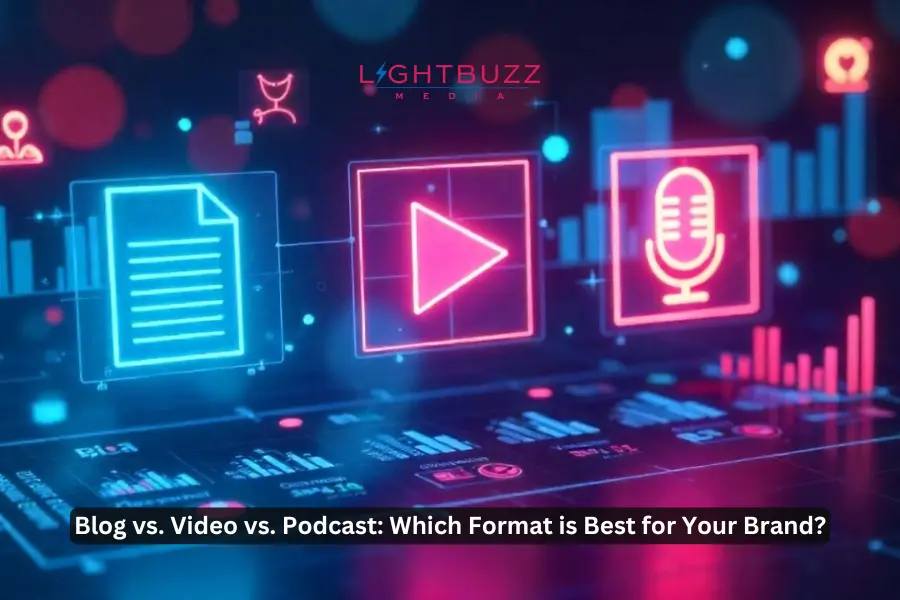In a rapidly changing digital world, content is king, but how you present your content in which format can either help or hinder your ability to connect with consumers and clients. As attention spans shrink and platforms become more diversified, brands are left wondering one simple question:
Are we going to do blogs, videos, or a podcast?
Let’s further discuss the advantages and disadvantages of each format so that we can help you determine which format works best for your brand’s content marketing in digital marketing, audience, and resources.
1. Blogs: The Power of Written Word
Useful for: SEO, thought leadership, educational content
Blogs are built into many content in digital marketing strategies and for good reason. Not only do they contribute to search engine optimisation (SEO) and help to drive organic traffic, but they also establish your brand as an authority in your niche. A well-written blog can generate traffic on Google for months and years, so it holds long-term value.
Pros:
- Great to drive traffic to your website
- Best for in-depth explanation, how-tos, and updates.
- Cos-effective and relatively easy to write.
Cons:
- Written content can be less engaging for visual or auditory learners.
- Writing and editing skills are required.
If your audience prefers reading or consuming informational content, and if you're interested in educating and converting through your website, blogs will play a key role in your strategy.
2. Videos: Visual Storytelling at its Finest
Best For: Engagement, product demos, social media
Video is probably the most engaging type of content available. Whether it’s a quick Instagram story or a long-form YouTube tutorial, video content holds attention and allows for expressing emotions, tone, and brand personality more effectively than text.
Pros:
- Exceedingly engaging and highly shareable
- Great for social media and for presenting a complete story
- Allows brands to showcase products, behind-the-scenes stories, and testimonials
Cons:
- Expenses for professional production
- Requires editing, better equipment, and possibly an extra production team
- Not always accessible in low-data or low-bandwidth settings
If your goal is to build brand awareness, increase engagement, and connect with your audience with emotion, then video will be the best format for that purpose.
3. Podcasts: The Intimate Medium
Best for: Thought leadership, long-form content, niche audience.
Podcasts are booming with the working professional or on-the-go audience. The format allows brands to cultivate a relationship with the audience through meaningful conversation, storytelling, or conversations about their industry.
Pros:
- Great for multitaskers and commuters.
- Builds trust and authority.
- Production is cheaper than video.
Cons:
- Promotion is harder, and ROI is harder to gauge.
- Discovery may be slower without a substantial promotion strategy.
- Continued engagement through episodes is necessary to maintain interest.
Podcasts are a good consideration for brands that are looking to establish themselves as thought leaders.
So, Which One is Right for You?
The answer will not be the same for everyone. Here is a quick reference:
- Use blogs if you want your content to rank on Google and be evergreen and educational.
- Use video if you want eye-catching content to grow your brand on social.
- Use podcasting if your goal is to build a loyal community or if you are targeting a very niche audience.
Pro tip: Don’t put yourself in a box. Repurpose your content! A blog can be the script for a video. A podcast can be transcribed into an article. Smart brands think about getting the most out of great content by having it stretch across multiple formats. Partner with a reputed content marketing agency in India, like Light Buzz Media, to find the best format that works best for you.
